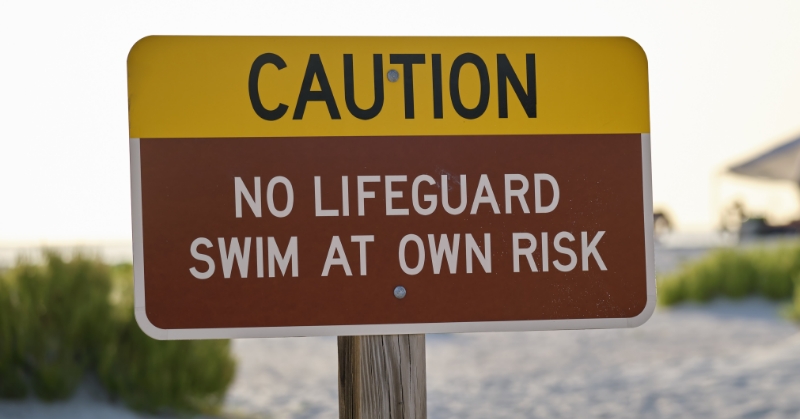
With its longer days and warmer temperatures, summer is an ideal season for outdoor recreation. But fun activities like swimming also carry the risk of injuries, especially among children. NICHD supports a broad spectrum of research that seeks to prevent and treat pediatric injuries from drowning to dog bites.
In the United States, more children ages 1 to 4 years die from drowning than any other cause. Those who survive may experience brain damage and other long-term health problems, yet little is known about how best to prevent drowning and improve health outcomes after drowning. To help stimulate this field of research, NICHD and the National Institute on Minority Health and Health Disparities issued a Notice of Special Interest to encourage and facilitate scientific discovery for drowning prevention.
A lack of close adult supervision is one risk factor for child drowning. Traditionally, injury prevention scientists have considered there to be three components of drowning prevention supervision: attention, proximity, and continuity. Caregivers should stay aware of children’s activities, be close enough to act in an emergency, and maintain constant supervision. Recently, NICHD staff and colleagues proposed expanding this concept to include caregiver competencies, such as the ability to safely rescue the child and provide initial emergency care. Recognizing the need to improve these competencies could improve drowning prevention programs.
There are also stark racial and socioeconomic disparities in drowning death rates. Recent NICHD-funded work identified disparities in adolescents’ access to drowning prevention strategies, such as swimming lessons and life jacket use, among the same demographic groups who experience higher drowning rates. NICHD staff also participate in a national project that aims to standardize drowning investigation processes across the United States. This effort promises to improve understanding of the context and drivers of disparities in drowning deaths.
Bicycling is another summer pastime that can pose health hazards. NICHD is funding a study to evaluate community-based bicycle safety education programs. Study participants are randomly assigned to receive a 12-hour bicycle safety education program, an enhanced version of the program that includes a parent training session, or no formal education. Participants’ bikes are equipped with a GPS/video system, allowing researchers to track their bicycling behaviors in detail. Knowledge gleaned from the study will help optimize safety education, helping reduce the burden of childhood bicycling injuries and increase bicycling safety.
Additional NICHD-supported projects focus on other sports-related topics, such as returning to gymnastics after experiencing a concussion and reducing head impacts in youth football. Recent NICHD-funded work compared the magnitude, frequency, and location of head impacts among youth and collegiate football players, yielding insights to inform the development of age-appropriate guidelines for helmet design and other prevention measures. Another study is investigating pain management strategies for children with broken bones.
Injuries such as firework-related burns and dog bites are also more common during the warmer months. Burns accounted for about one-third of fireworks injuries treated in hospital emergency departments in 2021, according to the Consumer Product Safety Commission. One NICHD-funded project is evaluating a smartphone app that facilitates at-home burn care by connecting injured children and their caregivers with expert burn nurses and physicians. NICHD also hopes to promote more scientific discovery in the field of dog bite prevention. Dog bites remain a leading cause of pediatric injury, particularly among children ages 5 to 9 years. One NICHD-funded study suggested that a video program may help children avoid dog bites by teaching them to recognize a dog’s warning signals.
Although the frequencies of certain injuries may tend to peak in the summer, injury risks—and the need for effective prevention strategies—are present all year. In addition to funding individual research projects, NICHD supports two successful programs to train the next generation of injury prevention scientists: the Pediatric Injury Research Training Program aimed at early-career scientists and the Pediatric Injury and Violence Prevention Student Internship Training Program (INSIGHT), which offers mentored research experiences for undergraduate students. Past INSIGHT projects have helped improve understanding of topics ranging from intimate partner violence to diabetic foot burns.
Through our research and training efforts, we seek to build scientific knowledge to reduce the frequency and impact of pediatric injuries, helping to ensure that children remain safe and healthy year-round.
 BACK TO TOP
BACK TO TOP